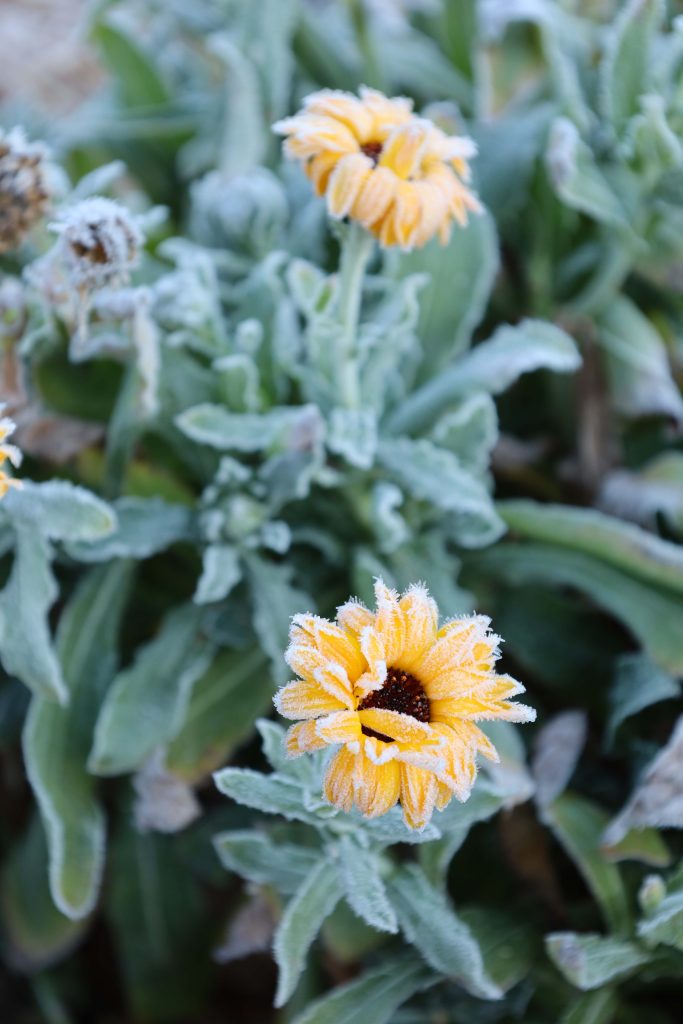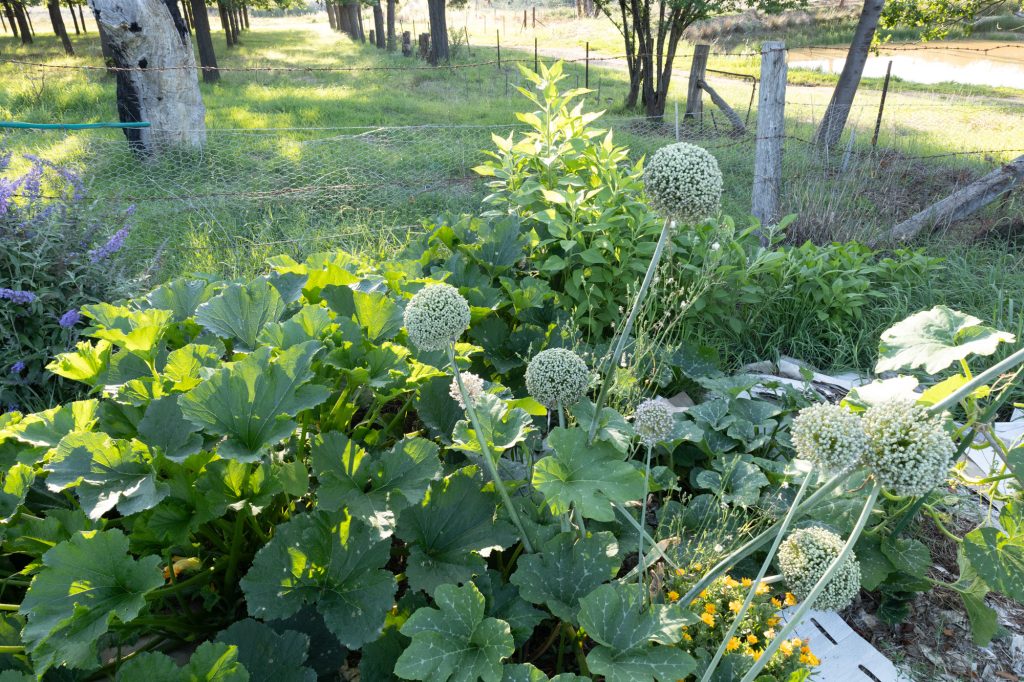We plant veggie gardens to obtain a yield. So you might think that your food crops are the most important characters in your patch, but what if I told you there were some other heavy lifters to consider. You’ve probably heard of ‘companion planting’, and in the world of plants there are lots of different interactions and combinations you could get in to. But I like to keep in simple, over the years of gardening there are some stand out, no fuss plants that give ALOT to your garden.
Let me explain; A companion plant is a plant that is grown close to another plant to enhance growth, provide pest control, attract beneficial insects, or offer other benefits. Companion planting improves crop success, soil health and makes it harder for pests to feast on your beloved veggies!
Without companion plants your garden might have bare soil and a limited diversity of plants in a small area which makes it just too easy for caterpillars and other hungry pests to chomp their way down your rows un-obstructed.
Without further adieu: here are my personal favourites and some of the first plants I’ll be establishing in my new veggie garden this Spring.
Calendula
There’s a Calendula in the Parascape logo for a reason! This is by far my favourite garden plant! It flowers ALL YEAR! I’ve often come outside on the frostiest of mornings and found a few flowers covered in icicles, just waiting to brighten your day!
Calendula’s superpower is its ability to release compounds into the soil which deter nematodes and other soil borne pests that might like to munch on the roots of your crops. They are typically an annual plant but because of their hardiness, in the climate where I live they can somewhat perennialise and are extremely good at self seeding! I just pull the old plants out once they start too look scraggly and after they have set seed!
Apart from improving the soil, Calendula is a medicinal plant with an affinity for healing skin conditions, reducing inflammation and soothing the lymphatic system. The bees and butterflies love it, and so do I!
Borage
Borage is a self-seeding plant that often pops up in new spots each year. Its stunning blue flowers are edible, with a mild cucumber flavour, and add a pop of colour to salads or garnishes. More importantly, they attract bees, ensuring reliable pollination for your veggie crops. With Borage around, you’ll likely notice an increase in your garden’s buzzing pollinator activity.
Leeks
Leeks are a dual-purpose gem in any garden. While they’re a tasty crop, their towering, long-lasting flowers are truly spectacular and become a magnet for beneficial insects—especially predatory wasps that keep pest populations in check. Leeks grow relatively tall, so I like to use them as a beautiful backdrop for shorter plants, all while inviting helpful bugs to hang around.
Wormwood
This hardy, silver-leaved plant tolerates intense sun and dry conditions, making it ideal for tough spots in the garden. As a “nurse plant,” Wormwood provides shade and wind protection to more delicate plants nearby. It’s also incredibly versatile if you have animals: its aromatic leaves help repel lice and other pests in a chicken coop, and it even serves as an anti-parasitic herbal remedy for people and animals (consult a herbalist before ingesting Wormwood). With its pleasant aroma and pretty foliage, Wormwood is as ornamental as it is practical.
Lavender
A timeless classic, Lavender is a magnet for bees and butterflies, infusing the garden with its soothing fragrance. This resilient plant is also easy to propagate from cuttings, making it a staple in gardens big and small. Its drought-tolerance makes it perfect for warm climates, and its calming scent and pollinator appeal make it a joy to have around.
Nasturtium
Nasturtium is a perfect “decoy plant,” drawing pests like aphids away from your main crops. The whole plant—leaves, flowers, and even young seed pods—is edible, with a peppery taste that’s a treat in salads or as a garnish. Plus, its bright, cheerful blooms lure pollinators, ensuring your veggie plants get the attention they need.
Legumes
Nitrogen-fixing legumes are essential for replenishing soil nutrients in a veggie patch. Common legumes to consider include annual varieties like bush beans, peas, and lentils, and perennial types like Acacias, clover and alfalfa.
Legumes have a unique symbiotic relationship with nitrogen-fixing bacteria, Rhizobium. These bacteria live in the root nodules of legume plants, where they convert atmospheric nitrogen into a form the plant can use. In return, the plant supplies the bacteria with carbohydrates. This process naturally enriches the soil with nitrogen, improving soil fertility for future crops, making legumes a key player in sustainable gardening.
They can even be used as “chop and drop” plants, providing quick mulch that enriches the soil with both nitrogen and carbon. Besides, legumes like beans offer an edible yield while attracting beneficial insects to the garden.
Companion plants do more than just look good—they create a resilient, balanced ecosystem that helps your crops thrive. By choosing plants that play well together, you’ll foster a garden that supports itself, minimises pests, and keeps the soil rich and lively.

